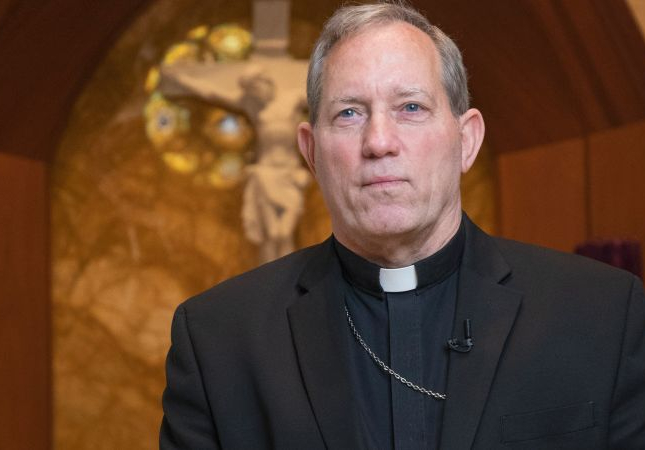
The Gospel for this Sunday comes from St. John and presents us with the raising of Lazarus.
This story isn’t so much about resuscitating a corpse, but about God’s giving life to the world through Jesus.
To quote a Dominican priest, “What comes through clearly is that apart from trust in God, the world is a cemetery. That this passage is not about Lazarus at all; it is about Jesus.”
This is the final miracle of Jesus before he is led to his own death. Some say, “because of Lazarus… Jesus must enter his own tomb.”
This Gospel passage is filled with imagery and symbolism which reveal the mystery of God and his deep love for humanity, for you and for me.
We are all Lazarus
Lazarus can be seen as a representation of all of humanity, just as the woman at the well was a couple of Sundays ago. Lazarus was a close friend of Jesus— just as we all are.
His name comes from “Eleazar” which means “God to the rescue.” He lives in Bethany, which means “house of affliction”.
Are you beginning to see the symbolism that St. John is using here? This “house of affliction” can symbolize all of us, either as individuals or as a community or as a society.
It can represent our situation — our human condition — but our human condition which we have kept apart from God. In a sense, we all live in Bethany. We are all afflicted in some way.
The Spirit breathes life
So we can begin to see, through the actions of Jesus, how God chooses to give life to the world, to all his creation and most importantly, to his intimate friends. As Jesus stands before our tombs, he weeps.
God sees a fallen people, a fallen world, a world wrapped up in itself – a fallen world which He wants to bring back to life through Jesus.
New Life
The prophecy of Ezekiel’s vision is of a field of “dry bones”, strewn in a field, in every direction and the Spirit breathing his life back into these bodies so that they could come to new life— ruah— the same word used in the Book of Genesis as God breathed life into Adam.
Symbolic of the Israelite people whose hope had been lost because they had been cut off from God, and now the Spirit of God is breathing new life into them… their graves were opened and God had them rise from the graves. This is such a beautiful image of God’s love and care and concern for his people.
The world is a cemetery without Christ
As I said earlier, without God, the world is a cemetery. Without a relationship with Christ, there is no life. The spirit is dead.
New life begins with Jesus: “I am the resurrection and the life.” “And the life.”
In other words, resurrection can be experienced now. The resurrected life with Jesus can be experienced and lived… today… this very moment. We don’t have to wait until our death. What a gift!
That was very important to the early church, as they experienced so many challenges and persecutions… and it is very important for us.
Our Struggles
All of our struggles in life: the tensions we feel… the pressures… the stress… the temptations… the failures and disappointments… the broken or shattered dreams… our fears and frustrations… our sinfulness and our hopelessness… things such as divorce or sickness or the limitations on our physical and mental abilities… all these are ways in which we experience death today.
All of these things represent the tombs in which we find ourselves buried, in the here and now… but because of Jesus, it is through these struggles we can experience what Lazarus did.
Jesus weeps for us
Jesus stands before us in our tombs, and weeps out of love for us… and then commands us “Come out! Come to him!” – with our whole heart, mind, soul and body. This story encourages us to a stance in faith that says that God can raise up new meaning for us.
Faith in the resurrection of the dead and hope in eternal life opens our eyes to the ultimate meaning of our existence. Without the light of faith, the entire universe finishes shut within a tomb devoid of any future, any hope.
We believe
As we close in on the end of this Lenten season, will we respond with the words of Martha, “Yes, Lord. I have come to believe that you are the Christ, the Son of God, the one who is coming into the world.”
In these final 11 days of Lent, may the Lord Jesus raise us all to new life in him.